#and voroshilov in the death of stalin!
Explore tagged Tumblr posts
Text
American justice has become politicized — a weapon against enemies with hall passes for favored groups. Attorney General Merrick Garland, Manhattan District Attorney Alvin Bragg, and dozens of big city, George Soros-funded leftist district attorneys routinely prosecute innocent citizens while letting criminals walk free.
The actions of these powerful officers of the law fit a pattern that the great Soviet-era Russian writer Aleksandr Solzhenitsyn not only would have recognized, but he also detailed. Manhattan DA Alvin Bragg’s prosecutions of both Donald Trump and Daniel Penny — closing arguments for Penny’s trial are scheduled for after Thanksgiving — combined with his leniency for deadly criminals are a case in point.
In “The Gulag Archipelago,” Solzhenitsyn wrote of the “Voroshilov Amnesty,” granted three weeks after Stalin’s death in 1953, which “flooded the whole country with a wave of murderers, bandits, and thieves, who had with great difficulty been rounded up after the war.” Communist authorities thought a general amnesty would endear them to the people — of course, many non-violent political prisoners weren’t eligible.
This amnesty was compounded by Article 139 of the Criminal Code of 1926 which defined the “limits of necessary self-defense.” As Solzhenitsyn described the law, “you had the right to unsheathe your knife only after the criminal’s knife was hovering over you. And you could stab him only after he had stabbed you. And otherwise, you would be the one put on trial.” Solzhenitsyn then observed that “This fear of exceeding the measure of necessary self-defense led to total spinelessness as a national characteristic.”
12 notes
·
View notes
Text
From Russia-based human rights org Memorial:
85 years ago, in April-May of 1940, more than 14.5 thousand Polish prisoners of war were executed on the command of the Politburo of the Communist Party of the Soviet Union, issued on March 5, 1940. The executed were army officers, policemen, members of the gendarmerie and border patrol agents who found themselves in Soviet custody after the Soviet invasion of Poland, which was agreed on with Hitler in September 1939. More than 7 thousand other Polish citizens were executed based on the same Politburo order. They were arrested in the spring of 1940 during a socio-political cleanse carried out on Soviet-occupied territories.
It was the first crime of this caliber committed during World War II.
The execution of prisoners of war is a war crime. It is one of the most severe and disgusting war crimes.
This is exactly how Soviet representatives qualified this crime in Nuremberg when they attempted to shift the blame for the Katyn massacre onto the Hitler coalition. However, the International tribunal rejected this attempt to deflect responsibility. After this, the topic of the Katyn massacre was strictly taboo in the Soviet Union and other countries of the “Soviet Bloc” for decades. Those who attempted to tell the truth about this crime were persecuted and accused of “libel” and “anti-Soviet” propaganda.
It was not until Perestroika that the situation changed.
On April 13, 1990, Gorbachev handed over the lists of Polish prisoners of war who were transferred from the Kozelsky, Ostashkovsky, and Starobelsky camps to be executed to the president of Poland, Jaruzelski. In 1992, key documents from 1940 became public: a brief from People's Commissar for Internal Affairs of the Soviet Union Beria to the Politburo of the Communist Party of the Soviet Union and the Politburo decision from March 5 itself.
However, the investigation that had been started by the Chief Military Prosecutor’s Office in 1990 was stopped in 2004, with the decision to halt the investigative process classified. Only after Memorial’s inquiry into this did it become known that the investigation was stopped “due to the death of the guilty party.” The crime itself was qualified as pertaining to Article 193-17, point “b” – “abuse of power by the senior officers of the Workers' and Peasants' Red Army, which had grave consequences in the presence of aggravating circumstances.
Hence, this means that those who carried out the crime were named as the guilty party. Stalin, Voroshilov, Molotov, Mikoyan, Kalinin and Kaganovich – the people who made the criminal decision – were set aside with no consequence.
The European Court of Justice qualified the Katyn massacre as a war crime in 2012. Nevertheless, this obvious statement never made it to any official Russian documents.
The names of communist party functionaries who decided to execute the prisoners of war are still present in Russian toponymy. Streets and businesses are named after them, the new name of Königsberg is based on one of the criminals’ last names, and monuments to Stalin appear in Russia unrestricted, one after the other. This is nothing other than the glorification of war criminals.
Those guilty are dead, and we cannot punish them. We cannot resurrect those executed, either.
But, for the sake of our future, to not let new atrocities be committed, these crimes need to be qualified as such. Silencing these crimes, justifying these actions and putting war criminals on a pedestal are actions that cannot be accepted in the modern, civilized society.
3 notes
·
View notes
Note
How did Kliment Voroshilov manage to survive the purges? He seems like the kind of guy who Stalin would be absolutely paranoid about.
Voroshilov, much like Molotov, was happy to sign Stalin's death notices and condemn his former comrades, providing the Red Army a form of institutional legitimacy for Stalin's Purges - stating that "I could not believe we would reveal so many and such scoundrels in the ranks to the highest command of our glorious, our valiant Workers' and Peasants' Army" is a great way to sell the purges as a corrective force as opposed to a paranoid one.
Much of the Soviet Union's social capital under both Lenin and Stalin was selling the danger of infiltrators and counter-revolutionaries, that such people were a danger to the fledgling Soviet project and needed to be exterminated. This rationale would underline much of the Soviet Union's security policy, such as the enabling of the Cheka and blanket exterminations in the rural provinces due to insufficient support for the city-based Bolsheviks. By tying the Great Purge, Stalin was able to build a lot of support from people across the social strata in the Soviet Union, along with the more venal causes of self-promotion for loyalists who signed on.
Thanks for the question, Anon.
SomethingLikeALawyer, Hand of the King
7 notes
·
View notes
Photo
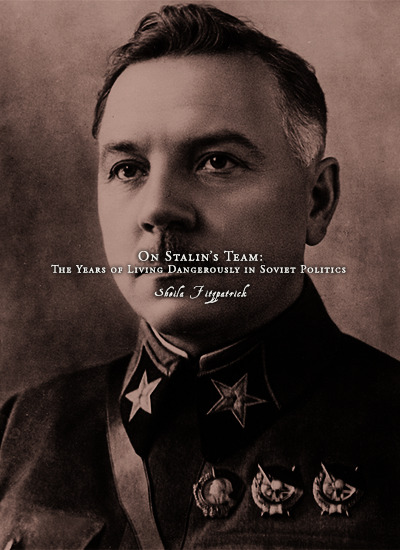
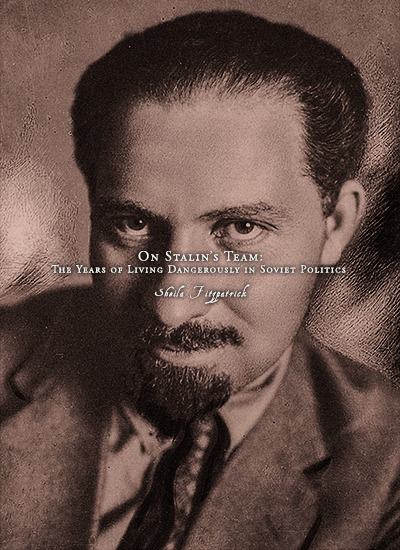
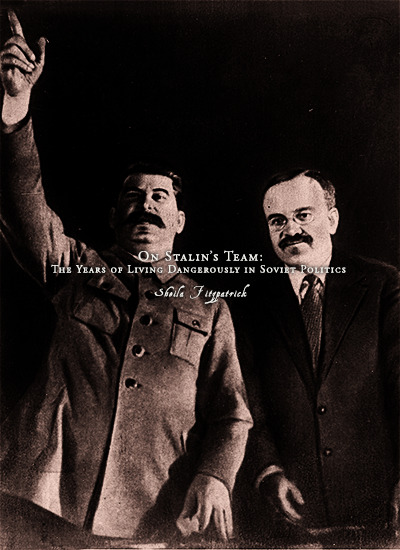
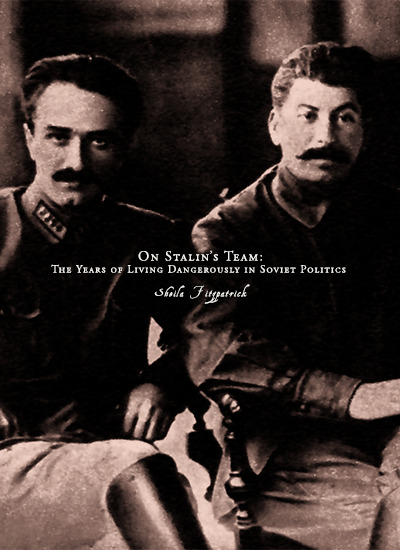
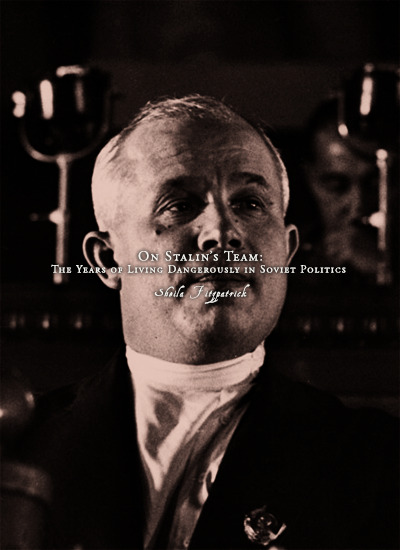
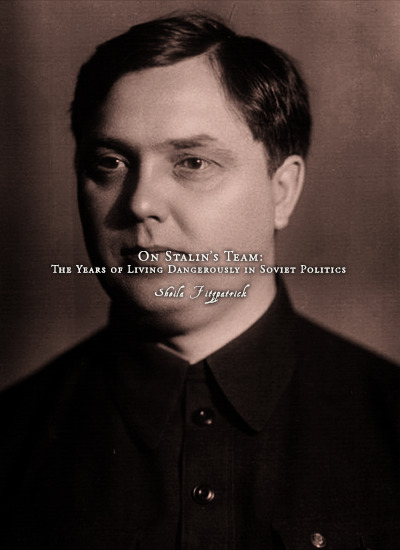
Favorite History Books || On Stalin’s Team: The Years of Living Dangerously in Soviet Politics by Sheila Fitzpatrick ★★★★☆
WHEN STALIN WANTED TO TEMPORIZE IN DEALING WITH FOREIGNERS, he sometimes indicated that the problem would be getting it past his Politburo. This was taken as a fiction, since the diplomats assumed, correctly, that the final decision was his. But that doesn’t mean that there wasn’t a Politburo that he consulted or a team of colleagues he worked with. That team—about a dozen persons at any given time, all men—came into existence in the 1920s, fought the Opposition teams headed by Lev Trotsky and Grigory Zinoviev after Lenin’s death, and stayed together, remarkably, for three decades, showing a phoenix-like capacity to survive team-threatening situations like the Great Purges, the paranoia of Stalin’s last years, and the perils of the post-Stalin transition. Thirty years is a long time to stay together in politics, even in a less lethal political climate than that of the Soviet Union under Stalin. The team finally disbanded in 1957, when one member (Nikita Khrushchev) made himself the new top boss and got rid of the rest of them.
There were changes in the team’s composition over the thirty years. Three members (Sergei Kirov, Valerian Kuibyshev, and Sergo Ordzhonikidze) died in the mid-1930s, and an- other (Mikhail Kalinin) just after the war. Four new recruits (Andrei Zhdanov, Khrushchev, Georgy Malenkov, and Lavrenty Beria) joined the team in the second half of the 1930s. The Great Purges removed some marginal members, notably, three working in Ukraine Stanislav Kosior, Vlas Chubar, and Pavel Postyshev), and after the war, the Leningrad Affair claimed a fast-rising recent recruit (Nikolai Voznesensky). But a core group—Vyacheslav Molotov, Lazar Kaganovich, Anastas Mikoyan, Kliment Voroshilov, and, until 1952, Andrei Andreyev—remained constant, and it was this group, together with the 1930s recruits, who constituted the team (“collective leadership”) that took over upon Stalin’s death.
#historyedit#litedit#soviet history#russian history#european history#history#history books#nanshe's graphics
37 notes
·
View notes
Note
IF YOU GOOGLE THE DEATH OF STALIN AND CLICK ON CAST AND EXPAND THE LIST YOU WILL LITERALLY FIND BULGANIN AND VOROSHILOV THERE I CAN'T DO THIS
you sure do glrtkjfdadhsfjgbksdlfgbhnj....voroshilov wasnt even portrayed in the movie yet he’s sneaking in nonetheless
2 notes
·
View notes
Text
Kliment Voroshilov: Revisionist or Hero?
SIMULATION AWFUL: (Announcing) Hey there, folks! It's Lowtax, and tonight, I'm slightly tipsy but still up for some historical review action! We're diving into the office of the Chairman of the Presidium of the Supreme Soviet (1938–1989) during the Kliment Voroshilov tenure (1953-1960). And guess who's joining me? None other than Nikita Khrushchev himself!
LOWTAX: (slightly slurring) So, Khrushchev, tell me about your buddy Voroshilov and his time as Chairman.
KHRUSHCHEV: Well, Lowtax, Voroshilov was a staunch supporter of Stalin and played a significant role in the Red Army during the Russian Civil War and World War II. He became Chairman after Stalin's death in 1953.
LOWTAX: (struggling to follow) Uh-huh, so what did he do as Chairman, exactly?
KHRUSHCHEV: Voroshilov supported my efforts to consolidate power and implement de-Stalinization policies. He was also involved in economic and military reforms.
LOWTAX: (takes a swig) Right, right. So... de-Stalinization, that's like... taking away Stalin's statues or something?
KHRUSHCHEV: (chuckles) It's more than that. We aimed to reverse some of Stalin's repressive policies and create a more open, less authoritarian society.
(loud crashing noise)
MECHA-LOWTAX: (bursting into the room) Hold on a second, Khrushchev! The Soviet Union was never truly socialist! It was just state capitalism under a different name!
KHRUSHCHEV: (offended) You dare insult the great Soviet Union? We were striving for a classless society and a worker's paradise!
MECHA-LOWTAX: Well, you failed! Only anarchist self-organization can create true socialism. Your centralized power structure only led to more exploitation and oppression!
KHRUSHCHEV: (angry) Nonsense! Anarchism is a utopian dream. Centralized planning and state control were necessary to build a strong economy and defend against imperialist aggression.
LOWTAX: (confused and slightly drunk) Uhh, guys, I just wanted to learn about Voroshilov's time as Chairman...
MECHA-LOWTAX: Sorry, Lowtax. This is important. Khrushchev, you can't deny that the Soviet Union became just another oppressive regime, perpetuating the same inequalities and hierarchies it claimed to fight against!
KHRUSHCHEV: (fuming) Your anarchist ideals are childish and unrealistic. The Soviet Union made great strides towards achieving socialism and improving the lives of its citizens!
LOWTAX: (slurring) Okay, folks, I think I've had enough history and politics for one night. Let's call it a draw, and we'll talk more when I'm sober... or maybe not.
0 notes
Text
Putin’s relationship with the oligarchs have often been compared to Stalin’s relationship with his satraps, such as Molotov, Kaganovich, Voroshilov, Ordzhonikidze, Mikoyan, Kirov, Zhdanov, Khrushchev, Malenkov, and Beria, minus the belief in socialism. He was their patron and they were his protegees, most of whom had protegees of their own in turn, which was how much of the USSR was run.
Stalin’s satraps lived absurdly privileged lives, compared to the average Soviet citizens, but it was all contingent on their political loyalty and they regularly needed to prove themselves worthy by using terror against real or perceived enemies. Those who failed to do so (or even were perceived to have done so), like Eikhe, Yagoda, Postyshev, Rudzutaks, Kosior, Yezhov, Yevdokimov, and Chubar, were shot and their family members were also shot or shipped off to the Gulag.
The Soviet state police, variously known as the Cheka, OGPU, NKVD, MGB, and KGB, also operated in terms of patronage networks, as is demonstrated by the “gangs” of Chekisty in the 1920s and ‘30 who were loyal to men such as Genrikh Yagoda, Yefim Yevdokimov, and Lavrentiy Beria (yes, him again).
Stalin was aware of these patronage networks throughout the Soviet Union, particularly among provincial Communist party leaders, and was suspicious of them, but was unable to ever do much of anything to root them out. His death in 1953 meant a somewhat softening of the use of terror, but the system of patronage stayed in place, peaking under Brezhnev.
Once you understand this, you start to see the seeds of where Putin’s style of authoritarian rule comes from: he and the oligarchs have kept the authoritarianism, but switched out the state socialism for extreme crony capitalism.

yeah oooh, woke and progressive points being made, but also “oligarch”, particularly in the context of Russian politics, doesn’t just mean “a rich person doing stuff”.
714 notes
·
View notes
Text
Leon Trotsky’s Art and Politics in Our Epoch (June 1938)
Ed. Note: The following letter by Leon Trotsky (written 18 June 1938) appeared in one of the early issues of Partisan Review in 1938 under the editorship of Dwight MacDonald. Trotsky’s hope that this magazine would “take its place in the victorious army of socialism” was not borne out by its subsequent evolution, as his second letter indicates.
The disillusioned intellectuals on Partisan Review proceeded from “re-evaluations” of Marxism and rejections of Bolshevism to a sterile preoccupation with problems of pure esthetics and literary techniques detached from their social roots along with an adaptation to the standpoint of liberal supporters of imperialist policies. In the process MacDonald separated himself from his associate editors and launched a new magazine Politics which, after wallowing helplessly in political, cultural and esthetic disorientation, recently folded up.
Since 1938 Diego Rivera has made his peace with Stalinism, a step which has improved neither his art nor his politics.
Despite the reconversions of these intellectuals to capitalism and Stalinism, the two great incarnations of reaction in our time, Trotsky’s remarks on the relations of art and politics retain their validity and urgency. More than ever today “the function of art is determined by its relation to the revolution.”
===
✓ Art and Politics in Our Epoch
You have been kind enough to invite me to express my views on the state of present-day arts and letters. I do this not without some hesitation. Since my book Literature and Revolution (1923), I have not once returned to the problem of artistic creation and only occasionally have I been able to follow the latest developments in this sphere. I am far from pretending to offer an exhaustive reply. The task of this letter is to correctly pose the question.
Generally speaking, art is an expression of man’s need for an harmonious and complete life, that is to say, his need for those major benefits of which a society of classes has deprived him. That is why a protest against reality, either conscious or unconscious, active or passive, optimistic or pessimistic, always forms part of a really creative piece of work. Every new tendency in art has begun with rebellion. Bourgeois society showed its strength throughout long periods of history in the fact that, combining repression, and encouragement, boycott and flattery, it was able to control and assimilate every “rebel” movement in art and raise it to the level of official “recognition.” But each time this “recognition” betokened, when all is said and done, the approach of trouble. It was then that from the left wing of the academic school or below it – i.e. from the ranks of new generation of bohemian artists – a fresher revolt would surge up to attain in its turn, after a decent interval, the steps of the academy. Through these stages passed classicism, romanticism, realism, naturalism, symbolism, impressionism, cubism, futurism ... Nevertheless, the union of art and the bourgeoisie remained stable, even if not happy, only so long as the bourgeoisie itself took the initiative and was capable of maintaining a regime both politically and morally “democratic.” This was a question of not only giving free rein to artists and playing up to them in every possible way, but also of granting special privileges to the top layer of the working class, and of mastering and subduing the bureaucracy of the unions and workers’ parties. All these phenomena exist in the same historical plane.
Decay of Capitalist Society
The decline of bourgeois society means an intolerable exacerbation of social contradictions, which are transformed inevitably into personal contradictions, calling forth an ever more burning need for a liberating art. Furthermore, a declining capitalism already finds itself completely incapable of offering the minimum conditions for the development of tendencies in art which correspond, however little, to our epoch. It fears superstitiously every new word, for it is no longer a matter of corrections and reforms for capitalism but of life and death. The oppressed masses live their own life. Bohemianism offers too limited a social base. Hence new tendencies take on a more and more violent character, alternating between hope and despair. The artistic schools of the last few decades – cubism, futurism, dadaism, surrealism – follow each other without reaching a complete development. Art, which is the most complex part of culture, the most sensitive and at the same time the least protected, suffers most from the decline and decay of bourgeois society.
To find a solution to this impasse through art itself is impossible. It is a crisis which concerns all culture, beginning at its economic base and ending in the highest spheres of ideology. Art can neither escape the crisis nor partition itself off. Art cannot save itself. It will rot away inevitably – as Grecian art rotted beneath the ruins of a culture founded on slavery – unless present-day society is able to rebuild itself. This task is essentially revolutionary in character. For these reasons the function of art in our epoch is determined by its relation to the revolution.
But precisely in this path history has set a formidable snare for the artist. A whole generation of “leftist” intelligentsia has turned its eyes for the last ten or fifteen years to the East and has bound its lot, in varying degrees, to a victorious revolution, if not to a revolutionary proletariat. Now, this is by no means one and the same thing. In the victorious revolution there is not only the revolution, but there is also the new privileged class which raises itself on the shoulders of the revolution. In reality, the “leftist” intelligentsia has tried to change masters. What has it gained?
The October revolution gave a magnificent impetus to all types of Soviet art. The bureaucratic reaction, on the contrary, has stifled artistic creation with a totalitarian hand. Nothing surprising here! Art is basically a function of the nerves and demands complete sincerity. Even the art of the court of absolute monarchies was based on idealization but not on falsification. The official art of the Soviet Union – and there is no other over there – resembles totalitarian justice, that is to say, it is based on lies and deceit. The goal of justice, as of art, is to exalt the “leader,” to fabricate an heroic myth. Human history has never seen anything to equal this in scope and impudence. A few examples will not be superfluous.
The well known Soviet writer, Vsevolod Ivanov, recently broke his silence to proclaim eagerly his solidarity with the justice of Vyshinsky. The general extermination of the old Bolsheviks, “those putrid emanations of capitalism,” stimulates in the artists a “creative hatred” in Ivanov’s words. Romantic, cautious by nature, lyrical, none too outspoken, Ivanov recalls Gorki, in many ways, but in miniature. Not a prostitute by nature, he preferred to remain quiet as long as possible but the time came when silence meant civil and perhaps physical annihilation. It is not a “creative hatred” that guides the pen of these writers but paralyzing fear.
Alexis Tolstoy, who has finally permitted the courtesan to master the artist, has written a novel expressly to glorify the military exploits of Stalin and Voroshilov at Tsaritsin. In reality, as impartial documents bear witness, the army of Tsaritsin – one of the two dozen armies of the revolution – played a rather sorry role. The two “heroes” were lieved of their posts. If the honest and simple Chapayev, one of the real heroes of the civil war is glorified in a Soviet film, it is only because he did not live until the “epoch of Stalin” which would have shot him as a Fascist agent. The same Alexis Tolstoy is now writing a drama on the theme of the year 1919: The Campaign of the Fourteen Powers. The principal heroes of this piece, according to the words of the author, are “Lenin, Stalin and Voroshilov. Their images [of Stalin and Voroshilov!] haloed in glory and heroism, will pervade the whole drama.” Thus, a talented writer who bears the name of the greatest and most truthful Russian realist, has become a manufacturer of “myths” to order!
Very recently, the 27th of April of this year, the official government paper Izvestia, printed a reproduction of a new painting representing Stalin as the organizer of the Tiflis strike in March 1902. However, it appears from documents long known to the public, that Stalin was in prison at that time and besides not in Tiflis but in Batum. This time the lie was too glaring! Izvestia was forced to excuse itself the next day for its deplorable blunder. No one knows what happened to the unfortunate picture, which was paid for from State funds.
Dozens, hundreds, thousands of books, films, canvases, sculptures immortalize and glorify such historic “episodes.” Thus the numerous pictures devoted to the October revolution do not fail to represent a revolutionary “Center,” with Stalin at its head, which never existed. It is necessary to say a few words concerning the gradual preparation of this falsification. Leonid Serebriakov, shot after the Piatakov-Radek trial, drew my attention in 1924 to the publication in Pravda, without explanation, of extracts from the minutes of the Central Committee of the latter part of 1917. An old secretary of the Central Committee, Serebriakov had numerous contacts behind the scenes with the party apparatus, and he knew enough the object of this unexpected publication: it was the first step, still a cautious one, towards the principal Stalinist myth, which now occupies so great a place in Soviet art.
The Mythical “Center”
From an historical distance the October insurrection seem much more planned and monolithic than what it proved to be in reality. In fact, there were lacking neither vacillations, search for solutions, nor impulsive beginnings which led nowhere. Thus, at the meeting of the Central Committee on the 16th of October, improvised in one night, in the presence of the most active leaders of the Petrograd Soviets, it was decided to round out the general-staff of the insurrection with an auxiliary “Center” created by the party and composed of Sverdlov, Stalin, Bubnov, Uritzky and Djerjinsky. At the very same time at the meeting of the Petrograd Soviet, a Revolutionary Military Committee was formed which from the moment of its appearance did so much work towards the preparation of the insurrection that the “Center,” appointed the night before, was forgotten by everybody, even by its own members. There were more than a few of such improvisations in the whirlwind of this period. Stalin never belonged to the Military Revolutionary Committee, did not appear at Smolny, staff headuarters of the revolution, had nothing to do with the practical preparation of the insurrection, but was to be found editing Pravda and writing drab articles, which were very little read. During the following years nobody once mentioned the “Practical Center.” In memoirs of participants in the insurrection – and there is no shortage of these – the name of Stalin is not once mentioned. Stalin himself, in an article on the anniversary of the October insuriection, in the Pravda of November 7, 1918, describing all the groups and individuals who took part in the insurrection, does not say a word about the “Practical Center.” Nevertheless, the old minutes, discovered by chance in 1924 and falsely interpreted, have served as a base for the bureaucratic legend. In every compilation, bibliographical guide, even in recently edited school books, the revolutionary “Center” has a prominent place with Stalin, at its head. Furthermore, no one has tried, not even out of a sense of decency, to explain where and how this “Center” established its headquarters, to whom it gave orders and what they were, and whether minutes were taken where they are. We have here all the features of the Moscow trials.
With the docility which distinguishes it, Soviet art so-called, has made this bureaucratic myth into one of its favorite subjects for artistic creation. Sverdlov, Djerjinsky, Uritsky and Bubnov are represented in oils or in tempera, seated or standing around Stalin and following his words with rapt attention. The building where the “Center” has headquarters, is intentionally depicted in a vague fashion, in order to avoid the embarrassing question of the address. What can one hope for or demand of artists who are forced to follow with their brushes the crude lines of what they themselves realize is an historical falsification?
The style of present-day official Soviet painting is called “socialist realism.” The name itself has evidently been invented by some high functionary in the department of the arts. This “realism” consists in the imitation of provincial daguerreotypes of the third quarter of the last century; the “socialist” character apparently consists in representing, in the manner of pretentious photography, events which never took place. It is impossible to read Soviet verse and prose without physical disgust, mixed with horror, or to look at reproductions of paintings and sculpture in which functionaries armed with pens, brushes, and scissors, under the supervision of functionaries armed with Mausers, glorify the “great” and “brilliant” leaders, actually devoid of the least spark of genius or greatness. The art of the Stalinist period will remain as the frankest expression of the profound decline of the proletarian revolution.
This state of things is not confined, however, within the frontiers of the USSR. Under the guise of a belated recognition of the October revolution, the “left” wing of the western intelligentsia has fallen on its knees before the Soviet bureaucracy. As a rule, those artists with some character and talent have kept aloof. But the appearance in the first ranks, of the failures, careerists and nobodys is all the more unfortunate. A rash of Centers and Committees of all sorts has broken out, of secretaries of both sexes, inevitable letters from Romain Rolland, subsidized editions, banquets and congresses, in which it is difficult to trace the line of demarcation between art and the GPU. Despite this vast spread of activity, this militarized movement has not produced one single work that was able to outlive its author or its inspirers of the Kremlin.
Rivera and October
In the field of painting, the October revolution has found her greatest interpreter not in the USSR but in faraway Mexico, not among the official “friends,” but in the person of a so-called “enemy of the people” whom the Fourth International is proud to number in its ranks. Nurtured in the artistic cultures of all peoples, all epochs, Diego Rivera has remained Mexican in the most profound fibres of his genius. But that which inspired him in these magnificent frescoes, which lifted him up above the artistic tradition, above contemporary art in a certain sense, above himself, is the mighty blast of the proletarian revolution. Without October, his power of creative penetration into the epic of work, oppression and insurrection, would never have attained such breadth and profundity. Do you wish to see with your own eyes the hidden springs of the social revolution? Look at the frescoes of Rivera. Do you wish to know what revolutionary art is like? Look at the frescoes of Rivera.
Come a little closer and you will see clearly enough, gashes and spots made by vandals: Catholics and other reactionaries, including of course, Stalinists. These cuts and gashes give even greater life to the frescoes. You have before you, not simply a “painting,” an object of passive esthetic contemplation, but a living part of the class struggle. And it is at the same time a masterpiece!
Only the historical youth of a country which has not yet emerged from the stage of struggle for national independence, has allowed Rivera’s revolutionary brush to be used on the walls of the public buildings of Mexico. In the United States it was more difficult. Just as the monks in the Middle Ages, through ignorance, it is true, erased antique literary productions from parchments to cover them with their scholastic ravings, just so Rockefeller’s lackeys, but this time maliciously, covered the frescoes of the talented Mexican with their decorative banalities. This recent palimpsest will conclusively show future generations the fate of art degraded in a decaying bourgeois society.
The situation is no better, however, in the country of the October revolution. Incredible as it seemed at first sight, there was no place for the art of Diego Rivera, either in Moscow, or in Leningrad, or in any other section of the USSR where the bureaucracy born of the revolution was erecting grandiose palaces and monuments to itself. And how could the Kremlin clique tolerate in its kingdom an artist who paints neither icons representing the “leader” nor life-size portraits of Voroshilov’s horse? The closing of the Soviet doors to Rivera will brand forever with an ineffaceable shame the totalitarian dictatorship.
Will it go on much longer – this stifling, this trampling under foot and muddying of everything on which the future of humanity depends? Reliable indications say no. The shameful and pitiable collapse of the cowardly and reactionary politics of the Popular Fronts in Spain and France, on the one hand, and the judicial frame-ups of Moscow, on the other, portend the approach of a major turning point not only in the political sphere, but also in the broader sphere of revolutionary ideology. Even the unfortunate “friends” – but evidently not the intellectual and moral shallows of The New Republic and Nation – are beginning to tire of the yoke and whip. Art, culture, politics need a new perspective. Without it humanity will not develop. But never before has the prospect been as menacing and catastrophic as now. That is the reason why panic is the dominant state of mind of the bewildered intelligentsia. Those who oppose an irresponsible skepticism to the yoke of Moscow do not weight heavy in the balance of history. Skepticism is only another form, and not the best, of demoralization. Behind the act, so popular now, of impartially keeping aloof from the Stalinist bureaucracy as well as its revolutionary adversaries, is hidden nine times out of ten a wretched prostration before the difficulties and dangers of history. Nevertheless, verbal subterfuges and petty maneuvers will be of no use. No one will be granted either pardon or respite. In the face of the era of wars and revolutions which is drawing near, everyone will have to give an answer: philosophers, poets, painters as well as simple mortals.
In the June issue of your magazine I found a curious letter from an editor of a Chicago magazine, unknown to me. Expressing (by mistake, I hope) his sympathy for your publication, he writes: “I can see no hope however [?] from the Trotskyites or other anemic splinters which have no mass base.” These arrogant words tell more about the author than he perhaps wanted to say. They show above all that the laws of development of society have remained a seven times sealed book for him. Not a single progressive idea has begun with a “mass base,” otherwise it would not have been a progressive idea. It is only in its last stage that the idea finds its masses – if, of course, it answers the needs of progress. All great movements have begun as “splinters” of older movements. In the beginning, Christianity was only a “splinter” of Judaism; Protestantism a “splinter” of Catholicism, that is to say decayed Christianity. The group of Marx and Engels came into existence as a “splinter” of the Hegelian Left. The Communist International germinated during the war from the “splinters” of the Social Democratic International. If these pioneers found themselves able to create a mass base, it was precisely because they did not fear isolation. They knew beforehand that the quality of their ideas would be transformed into quantity. These “splinters” did not suffer from anemia; on the contrary, they carried within themselves the germs of the great historical movements of tomorrow.
“Splinters” and Pioneers
In very much the same way, to repeat, a progressive movement occurs in art. When an artistic tendency has exhausted its creative resources, creative “splinters” separate from it, which are able to look at the world with new eyes. The more daring the pioneers show in their ideas and actions, the more bitterly they oppose themselves to established authority which rests on a conservative “mass base,” the more conventional souls, skeptics, and snobs are inclined to see in the pioneers, impotent eccentrics or “anemic splinters‚” But in the last analysis it is the conventional souls, skeptics and snobs who are wrong – and life passes them by.
The Thermidorian bureaucracy, to whom one cannot deny either a certain animal sense of danger or a strong instinct of self-preservation, is not at all inclined to estimate its revolutionary adversaries with such whole-hearted disdain, a disdain which is often coupled with lightness and inconsistency. In the Moscow trials, Stalin, who is not a venturesome player by nature, staked on the struggle against “Trotskyism,” the fate of the Kremlin oligarchy as well as his own personal destiny. How can one explain this fact? The furious international campaign against “Trotskyism,” for which a parallel in history will be difficult to find, would be absolutely inexplicable if the “splinters” were not endowed with an enormous vitality. He who does not see this today will see it better tomorrow.
As if to complete his self-portrait with one brilliant stroke, your Chicago correspondent vows – what bravery! – to meet you in a future concentration camp either fascist or “communist.” A fine program! To tremble at the thought of the concentration camp is certainly not admirable. But is it much better to foredoom oneself and one’s ideas to this grim hospitality? With the Bolshevik “amoralism” which is characteristic of us, we are ready to suggest that gentlemen – by no means anemic – who capitulate before the fight and without a fight really deserve nothing better than the concentration camp.
It would be a different matter if your correspondent simply said: in the sphere of literature and art we wish no supervision on the part of “Trotskyists” any more than from the Stalinists. This protest would be, in essence, absolutely just. One can only retort that to aim it at those who are termed “Trotskyists” would be to batter in an open door. The ideological base of the conflict between the Fourth and Third Internationals is the profound disagreement not only on the tasks of the party but in general on the entire material and spiritual life of mankind.
The real crisis of civilization is above all the crisis of revolutionary leadership. Stalinism is the greatest element of reaction in this crisis. Without a new flag and a new program it is impossible to create a revolutionary mass base; consequently it is impossible to rescue society from its dilemma. But a truly revolutionary party is neither able nor willing to take upon itself the task of “leading” and even less of commanding art, either before or after the conquest of power. Such a pretension could only enter the head of a bureaucracy – ignorant and impudent, intoxicated with its totalitarian power – which has become the antithesis of the proletarian revolution. Art, like science, not only does not seek orders, but by its very essence, cannot tolerate them,. Artistic creation has its laws – even when it consciously serves a social movement. Truly intellectual creation is incompatible with lies, hypocrisy and the spirit of conformity. Art can become a strong ally of revolution only in so far as it remains faithful to itself. Poets, painters, sculptors and musicians will themselves find their own approach and methods, if the struggle for freedom of oppressed classes and peoples scatters the clouds of skepticism and of pessimism which cover the horizon of mankind. The first condition of this regeneration is the overthrow of the domination of the Kremlin bureaucracy.
May your magazine take its place in the victorious army of socialism and not in a concentration camp!
~
Leon Trotsky
Coyoacan, D.F.
June 18, 1938
===
✓ A Second Letter
(The following letter was addressed to Dwight MacDonald, then editor of Partisan Review on January 29, 1938.)
Dear Mr. MacDonald:
I shall speak with you very frankly inasmuch as reservations or insincere half-praises would signify a lack of respect for you and our undertaking.
It is my general impression that the editors of Partisan Review are capable, educated and intelligent people but they have nothing to say. They seek themes which are incapable of hurting anyone but which likewise are incapable of giving anybody a thing. I have never seen or heard of a group with such a mood gaining success, i.e., winning influence and leaving some sort of trace in the history of thought.
Note that I am not at all touching upon the content of your ideas (perhaps because I cannot discern them in your magazine). “Independence” and “freedom” are two empty notions. But I am ready to grant that “independence” and “freedom” as you understand them represent some kind of actual cultural value. Excellent! But then it is necessary to defend them with sword, or at least with whip, in hand. Every new artistic or literary tendency (naturalism, symbolism, futurism, cubism, expressionism and so forth and so on) has begun with a “scandal,” breaking the old respected crockery, bruising many established authorities. This flowed not at all solely from publicity seeking (although there was no lack of this). No, these people – artists, as well as literary critics – had something to say. They had friends, they had enemies, they fought, and exactly through this they demonstrated their right to exist.
So far as your publication is concerned, it wishes, in the main instance, apparently to demonstrate its respectability. You defend yourselves from the Stalinists like well-behaved young ladies whom street rowdies insult. “Why are we attacked?” you complain “we want only one thing: to live and let others live.” Such a policy cannot gain success.
Of course, there are not a few disapointed “friends of the USSR” and generally dismal intellectuals who, having been burned once, fear more than anything else to become again engaged. These people will send you tepid, sympathetic letters but they will not guarantee the success of the magazine since serious success has never yet been based on political, cultural and esthetic disorientation.
I wanted to hope that this was but a temporary condition and that the publishers of Partisan Review would cease to be afraid of themselves. I must say, however, that the Symposium outlined by you is not at all capable of strengthening these hopes. You phrase the question about Marxism as if you were beginning history from a clean page. The very Symposium title itself sounds extremely pretentious and at the same time confused. The majority of the writers whom you have invited have shown by their whole past – alas! – a complete incapacity for theoretical thinking. Some of them are political corpses. How can a corpse be entrusted with deciding whether Marxism is a living force? No, I categorically refuse to participate in that kind of endeavor.
A world war is approaching. The inner political struggle in all countries tends to become transformed into civil war. Currents of the highest tension are active in all fields of culture and ideology. You evidently wish to create a small cultural monastery, guarding itself from the outside world by skepticism, agnosticism and respectability. Such an endeavor does not open up any kind of perspective.
It is entirely possible that the tone of this letter will appear to you as sharp, impermissible, and “sectarian.” In my eyes this would constitute merely supplementary proof of the fact that you wish to publish a peaceful “little” magazine without participating actively in the cultural life of your epoch. If, on the contrary, you do not consider my “sectarian” tone a hindrance to a future exchange of opinion then I remain fully at your service.
Sincerely,
Leon Trotsky
1 note
·
View note
Text
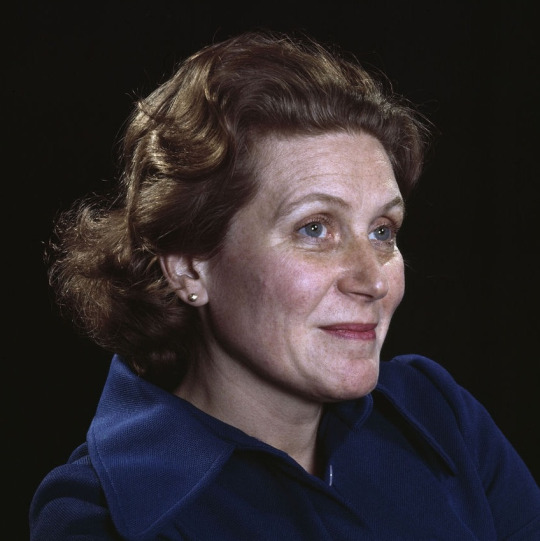
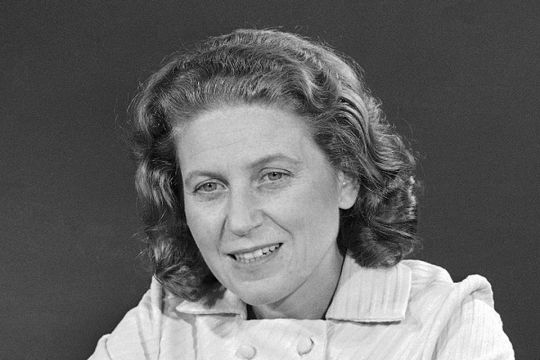

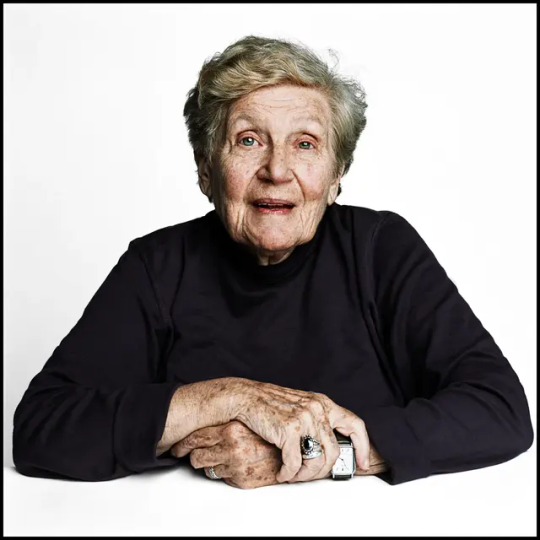
November 22: On this day in 2011, Svetlana Alliluyeva died at the age of 85.
She was born on the 28th of February 1926. Her father was Joseph Stalin, and her mother was Nadezhda Alliluyeva, Stalin's second wife (after Kato Svanidze). She has an older brother named Vasily, and an older half-brother from Stalin's first marriage, named Yakov. Yakov was neglected by Stalin when he was captured by the Nazi soldiers during WWII.
Everything went downhill for Stalin's family life in 1932. Around the early morning of November 9, Nadezhda shot herself with a pistol given to her by her brother, Pavel Alliluyev. This was because she and Stalin had a fight during a party in the Voroshilovs' residence. She was humiliated by Stalin at the table. He called out to her, "Hey you! Why are you not drinking? Have a drink!" to which she responded, "My name is not hey!" and exited. The last person to see her and walk with her was Polina Zhemchuzhina, Vyacheslav Molotov's wife.
Suicide was considered an act of treason in the Soviet Union, so her cause of death was faked. Everyone was told that Nadezhda died of appendicitis. Everyone was fooled, even Svetlana was told about this up until she learned the truth when she was a teenager.
Svetlana was a daddy's girl up until that moment. She attended his funeral in 1953, however.
In 1967, she decided to defect to the United States of America, as well as living a life there. Take note that this was during the Cold War, so the tensions between the USA and the USSR were high.
She lived in the USA as Lana Peters, and she was survived by her daughter Olga Peters, through her marriage with Wesley Peters, as well as her children in the Soviet Union from her previous marriages.
She has written books; her memoirs are entitled "Twenty Letters to a Friend," and "Only One Year."
This is Svetlana's last letter to her daughter, Olga:
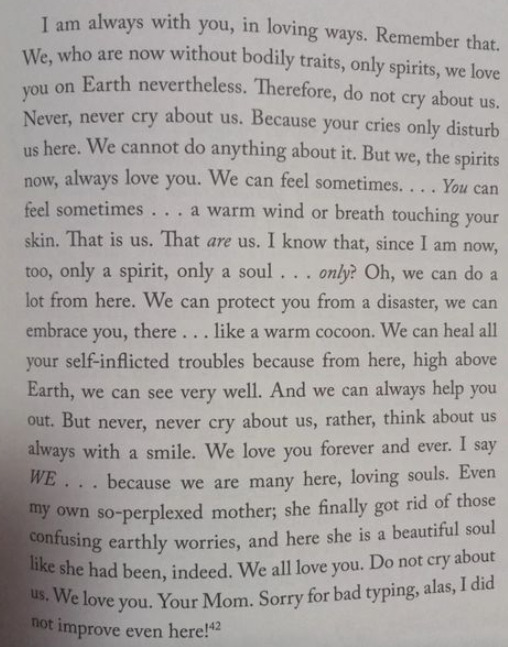
#svetlana alliluyeva#soviet union#ussr#soviet history#history#stalin era#i have waited for so long to post about her#finishing sullivan's stalin's daughter made me cry bc svetlana feels like a friend already#as for nadya i made a literary piece in her memory for a project and i hope i am able to share it with you all!
8 notes
·
View notes
Link
“Contrary to what so many good people – out of sheer terror of ‘Communism’ – think, Capitalism is not ‘free enterprise,’ an incentive for success, ‘a chance for all.’ Capitalism is trusts, speculation, parasitical usury. Capitalism is J. P. Morgan, Rothschild’s bank, ripping apart the nations like maddened swine. Capitalism is the Jewish frying pan in which culture is rendered down to the grease of money. Following it, as the night to day, is the thrice hotter Jewish fire of ‘Communism.’” William Striker
Jews and Bolshevism
Amongst themselves, the Jews are quite candid about their sympathy for and involvement in Bolshevism.
On 4 April 1919 the Jewish Chronicle: “There is much in the fact of Bolshevism itself, in the fact that so many Jews are Bolshevists, in the fact that the ideals of Bolshevism at many points are consonant with the finest ideals of Judaism.”
(Perhaps this explains why the Red Army uses a Jewish star as its symbol?)
Probably the best-known exposé of the Jewish role in the Bolshevik coup d’état was by Sir Winston Churchill, writing in the Illustrated Sunday Herald of 8 February 1920. Churchill wrote “With the notable exception of Lenin, the majority of leading figures are Jews. Moreover the principal inspiration and the driving power comes from Jewish leaders.”
Communism was of course founded by Karl Marx whose grandfather was a rabbi by the name of Mordeccai. Marx was given his initial encouragement by a Communist-Zionist by the name of Moses Hess. As founder and editor of the Rheinische Zeitung, the main organ of leftist thought in Germany, he provided Karl Marx with his first important platform. Later, in Brussels, he collaborated with Marx on The German Ideology. It was Hess too who converted to Communism Friedrich Engels, the wealthy textiles magnate who later subsidised Marx from the profits of sweated labour in Britain and Germany.
When the Bolsheviks overthrew the short-lived democratic government in Moscow and St. Petersburg in October 1917, it was a virtual Jewish coup d’état. The most prominent Jewish Commissar was Trotsky, real name Bronstein. He had been married by a rabbi in 1900, and whilst in exile in New York he had worked for Novy Mir, described in the Church Times (23 January 1925) as a “Yiddish newspaper.”
The various reporters and diplomats who were there at the time of the “Revolution” have given evidence as to its Jewish nature.
The widow of the Guardian’s correspondent Mrs. Ariadna Tyrkova-Williams wrote: “In the Soviet Republic all the committees and commissaries were filled with Jews.”
The most detailed description of Jewish influence in the Bolshevik ‘revolution comes from Robert Wilton, the Russian correspondent of The Times. In 1920 he published a book in French, Les Derniers Jours des Romanofs, which gave the racial background of all the members of the Soviet government. (This does not appear in the later English translation, for some odd reason.) After the publication of this monumental work, Wilton was ostracised by the press, and he died in poverty in 1925. He reported that the Central Committee of the Bolshevik Party was made up as follows:
NAME
NATIONALITY
Bronstein (Trotsky)
Jew
Apfelbaum (Zinovief)
Jew
Lourie (Larine)
Jew
Ouritski
Jew
Volodarski
Jew
Rosenfeldt (Kamanef)
Jew
Smidovitch
Jew
Sverdlof (Yankel)
Jew
Nakhamkes (Steklof)
Jew
Ulyanov (Lenin)Russian
KrylenkoRussian
LounatcharskiRussian
“The Council of the People’s Commissars comprises the following:
MINISTRY
NAME
NATIONALITY
PresidentUlyanov (Lenin)Russian
Foreign AffairsTchitcherineRussian
NationalitiesDjugashvili (Stalin)Georgian
AgricultureProtianArmenian
Economic Council
Lourie (Larine)
Jew
Food
Schlichter
Jew
Army & Navy
Bronstein (Trotsky)
Jew
State Control
Lander
Jew
State Lands
Kauffman
Jew
Works
V. Schmidt
Jew
Social Relief
E. Lelina (Knigissen)
Jewess
Public InstructionLounatcharskyRussian
Religions
Spitzberg
Jew
Interior
Apfelbaum (Zinovief)
Jew
Hygiene
Anvelt
Jew
Finance
Isidore Goukovski
Jew
Press
Volodarski
Jew
Elections
Ouritski
Jew
Justice
I. Steinberg
Jew
Refugees
Fenigstein
Jew
Refugees (assist.)
Savitch
Jew
Refugees (assist.)
Zaslovski
Jew
“The following is the list of members of the Central Executive Committee:
NAME
NATIONALITY
Sverdlov
(president)Jew
Avanessof (sec.)Armenian
BrunoLett
Babtchinski
Jew
BukharinRussian
Weinberg
Jew
Gailiss
Jew
Ganzburg
Jew
Danichevski
Jew
StarckGerman
Sachs
Jew
Scheinmann
Jew
Erdling
Jew
Landauer
Jew
Linder
Jew
WolachCzech
Dimanstein
Jew
EncukidzeGeorgian
Ermann
Jew
Joffe
Jew
Karkline
Jew
Knigissen
Jew
Rosenfeldt (Kamenef)
Jew
Apfelbaum (Zinovief)
Jew
Krylenko
Russian
KrassikofSachs
Jew
Kaprik
Jew
KaoulLett
Ulyanov (lenin)Russian
Latsis
Jew
Lander
Jew
LounatcharskiRussian
PetersonLett
PetersLett
Roudzoutas
Jew
Rosine
Jew
Smidovitch
Jew
StoutchkaLett
Nakhamkes (Steklof)
Jew
Sosnovski
Jew
Skrytnik
Jew
Bronstein (Trotsky)
Jew
Teodorovitch
Jew
TerianArmenian
Ouritski
Jew
TelechkineRussian
Feldmann
Jew
Froumkine
Jew
SouriupaUkranian
TchavtchevadzeGeorgian
Scheikmann
Jew
Rosental
Jew
AchkinaziImeretian
Karakhane
Karaim (Jew)
Rose
Jew
Sobelson (Radek)
Jew
Sclichter
Jew
Schikolini
Jew
Chklianski
Jew
Levine (Pravdine)
Jew
“The following is the list of members of the Extraordinary Commission of Moscow:
NAME
NATIONALITY
Dzerjinski (president)Pole
Peters (vice-president)Lett
Chklovski
Jew
Kheifiss
Jew
Zeistine
Jew
Razmirovitch
Jew
Kronberg
Jew
Khaikina
Jewess
KarlsonLett
Schaumann
Jew
Leontovitch
Jew
Jacob Goldine
Jew
Glaperstein
Jew
Kniggisen
Jew
LatzisLett
Schillenkuss
Jew
JansonLett
Rivkine
Jew
AntonofRussian
Delafabre
Jew
Tsitkine
Jew
Roskirovitch
Jew
G. Sverdlof
Jew
Biesenski
Jew
Blioumkine
Jew
AlexandrevitchRussian
I. Model
Jew
Routenberg
Jew
Pines
Jew
Sachs
Jew
DaybolLett
SaissouneArmenian
DeylkenenLett
Liebert
Jew
VogelGerman
ZakissLett
Although Lenin is described as a “Russian,” in fact he was a mixture of various nationalities. It is likely that he was one-quarter Russian, one-quarter German, one-quarter Jewish and at least one-quarter Kalmuck (Mongol), which accounts for his Mongol appearance. Various authorities allege that his wife, Nadezhda Krupskaya was a Jewess and that her family spoke Yiddish in the home.
A report sent to the British government in 1918 by Mr. Oudendyke, the Dutch consul in St. Petersburg, said that “Bolshevism is organised and worked by Jews.” The report was included in a pamphlet published as a government White Paper in April 1919 entitled Russia No. 1 (1919) A Collection of Reports on Bolshevism in Russia. However, the pamphlet was quickly withdrawn and reissued with various excisions and alterations made.
In the War Records Division of the United States National Archives there is filed a report from an American Intelligence operative in St. Petersburg. Under Record Group 20; Records of the American Expeditionary Forces Capt. Montgomery Schuyler, G2 Intelligence wrote, “The Bolshevik movement is and has been since its beginning, guided and controlled by Russian Jews of the greasiest type.”
Also in the U.S. National Archives are two telegrams sent by American diplomats in Russia. State Department document 861.00/1757 sent on 2 May 1918 by U.S. Consul Summers in Moscow relates, “Jews predominant in local Soviet government, anti-Jewish feeling growing among population.” Document 861.00/2205 from Consul Caldwell in Vladivostock on 5 July 1918 describes, “Fifty per cent of Soviet government in each town consists of Jews of worst type.”
In January, 1924, Lenin died from causes variously described as ‘a heart attack,’ brain hemorrhage’ and ‘syphilis.’ His comrades immediately began fighting amongst themselves to see who was to become his successor.
A relative outsider, Joseph Stalin, came to the fore and purged all competition either by exiling or executing them. Since Stalin was not Jewish, yet nearly all his opponents were, it is often suggested that Stalin was anti-Semitic. This is far from the truth.
Stalin had three wives, all of them Jewesses. The first was Ekaterina Svanidze who bore him one son, Jacob. His second wife was Kadya Allevijah. She bore him a son Vassili and a daughter Svetlana. His second wife died in mysterious circumstances, either by committing suicide or murdered by Stalin. His third wife was Rosa Kaganovich, the sister of Lazar Kaganovich, the head of Soviet industry. Stalin’s daughter (who in 1967 fled to the USA) then married Lazar’s son Mihail i.e. her step-mother’s nephew. Svetlana Stalin had a total of four husbands, three of them Jewish.
Stalin’s vice-president Molotov was also married to a Jewess, whose brother, Sam Karp, runs an export business in Connecticut. Just to complicate things even more, the Molotov’s (half-Jewish) daughter also called Svetlana was engaged to be married to Stalin’s son Vassili.
After the death of Stalin, his successors kept up the tradition, for a report in the B’nai B’rith Messenger relates: “To show that Russia treats its Jews well, Soviet Premier Nikita Kruschev this week remarked at a reception at the Polish Embassy that not only he himself and Soviet President Klementi Voroshilov, but also half the members of the Praesidium have Jewish wives. Mr. Kruschev made this remark to Israeli Ambassador Joseph Avidar, who was amongst the guests.” (Kruschev’s wife was yet another Kaganovitch.)
According to a report in The Canadian Jewish News of 13 November 1964 the present Soviet boss Leonid Brezhnev is married to a Jewess, and his children are brought up as Jews. There are a number of prominent Jews in the Soviet government, including Dimitri Dymshits in charge of industry, Lev Shapiro regional secretary of Birobidjan, and Yuri Andropov in charge of the secret police, the KGB. In fact, every secret police chief in Soviet history has been a Jew, from the first Uritsky to the most recent, the murderous Beria. A Jew is also in charge of the Soviet economy – Leonid Kantorovich.
It is a well-known fact that the Bolsheviks were and are financed by Jewish interests in the West.
At a Bolshevik celebration rally in New York’s Carnegie Hall on the night of 23 March 1917, a telegram of support from Jacob Schiff of Kuhn, Loeb & Co. was read out. The telegram was reprinted in the next morning’s New York Times. Schiff later tried to deny his involvement, but thirty years later his grandson John admitted in the New York Journal-American (3 February 1949) that the old man had sunk twenty million dollars into the Bolshevik cause.
Another Western bankers who poured funds into Bolshevik Russia was Olaf Ashberg of the Stockholm Nia Banken. He remained the Soviets’ paymaster until the late 1940s. The London Evening Standard of 6 September 1948 reported a visit by Ashberg to Switzerland “for secret meetings with Swiss government officials and banking executives. Diplomatic circles describe Mr. Ashberg as the ‘Soviet banker’ who advanced large sums to Lenin and Trotsky in 1917. At the time of the revolution, Mr. Ashberg gave Trotsky money to form and equip the first unit of the Red Army.”
The Bolsheviks also received assistance from Armand Hammer, who still commutes back and forward between New York and Moscow to take care of his business interests in both communities. Hammer’s Occidental Oil Company is at the moment building a 1,600 mile chemicals pipeline in southern Russia. He is also on such good terms with the Soviets that he personally arranges for Soviet art galleries to lend paintings to America.
Another American-based businessman to help out the Soviet economy is Michael Fribourg, who owns the massive Continental Grain Company. Together with the Louis Dreyfus Corporation, these Jewish speculators were able to buy up vast quantities of cheap American grain in 1972, sell it to the Soviets at a vast profit, and collect an export subsidy from the U.S. taxpayer.
In every other East European country, it is exactly the same story:
In Hungary a Communist revolution was staged in 1919, instigated by the Jew Bela Kun (Cohen). During the three month regime, the country was turned upside down in a reign of murder and terror. Here again, the government was composed almost entirely of Jews. And it was this factor which brought about the regime’s downfall, as the ordinary Hungarians detested Jewish dictatorship. Kun was deposed and fled to the Soviet Union, where he became chief of the secret police, the Cheka, in southern Russia.
It was not until 1945 that the Jews were able to regain control. Three Russian Jews were installed as the ruling triumvirate, Matyas Rakosi (Rosencranz), Erno Gero (Singer) and Zoltan Vas. Both Rakosi and Gero had been members of Kun’s bloody government.
In Germany, the Jews also tried to take over there in the chaos that followed the First World War. Aided by funds from the Soviet Ambassador Joffe, Rosa Luxemburg’s Spartacus Bund attempted to overthrow the government. The revolt was quelled and its leaders Luxemburg and Karl Liebknecht executed.
The post-war dictator of Roumania, Anna Pauker, was the daughter of a Bucharest kosher butcher. For a time she earned her living teaching Hebrew. Her father and brother now live in Israel.
Although Tito was the only non-Jewish dictator behind the Iron Curtain in the late 1940s, he was tutored by the Jew Mosa Pijade. According to John Gunther in Behind the Iron Curtain, “He is Tito’s mentor... Whatever ideological structure Tito may have, he got it from the shrewd old man.”
Moscow’s puppet government in Czechoslovakia in the late 1940s was run by another Jew, Rudolph Slansky.
In Poland too, Jews occupied virtually every position of authority in the post-war Communist regime. Prominent among these were Minc, Skryesewski, Modzelewski and Berman. Jacob Berman gradually eclipsed the others until he became supreme dictator by himself. Also, Gomulka’s wife was a Jewess.
Even in China, Soviet Jews were at work helping Mao Tse Tung. High up in the Political Department of the Red Army in China were W. N. Levitschev and J. B. Gamarnik.
From Let My People Go, Empirical Publications, Northern Ireland c. 1976. Authorship unknown. Names of Jews are shown in bold face throughout the publication.
0 notes
Text
THE GREATEST DANGER FACING MAN TODAY IS THE JEWS
The Attitude of Communism toward Christianity The greatest danger facing the world today is the Jews! The Russian leader Vladimir Putin knows it very well. After having lived to see his country collapse and all because of a Bolshevist, Jewish Communist coup that succeeded and now controls the Soviet Union, once an Orthodox Christian nation turned into an Atheistic Dynasty by dirty money supplied by the Jews in New York City. The Jews have vowed to do it again here in America. Money speaks! The dirty money that overthrew Russia is now being used to destroy America and is behind all, and I say all the upheaval in the United States today, especially, the attacks on the current President Donald Trump and now his Supreme Court nominee Judge Brett Kavanaugh. An old philosopher once said, to know a thing well one must understand its first cause. It is unpleasant to realize that a certain element of apostate Jewry is behind the turmoil of this dark hour and the present Soviet persecution through which the Church of Jesus Christ is passing. The Jews and Communism: No informed person who is truthful denies the Jewish character of Communism! The writer recently published the names and nationalities of every leader in the Moscow dictatorship as it was set up many years ago. It was discovered that out of the 545 members of the bureaucracy, 454 were Jews and there were only 23 Russians in the group. In other words, the Russian people are governed by a gang of anti-Christian foreigners, many of whom are said to be unable to speak the language of the people they govern. Some of the principal officials of the Red government are reported to have come from the East Side of New York. It has been said on the floor of the United States Congress, and the charge has not been denied, that a certain Jewish banking concern in Wall Street sponsored Trotsky's mass meetings of rebellion in New York some years ago, sent him across the ocean secretly, and deposited millions of dollars in a Swedish bank to the credit of the destroyers, with which the Russian revolution was financed. In her remarkable book “Waters Flowing Eastward”, Mrs. L. Fry states that back in 1893 a Jewish secret order here in America appointed Jacob Schiff, a Wall Street Jew, chairman of its committee on Russian revolutionary activities. If this is true, it simply means that Mr. Schiff sat at his desk in New York and directed the destruction of the Czar's government thousands of miles away. It is impossible to separate Jewish Communism from Jewish Capitalism. Laboring men who think they can free themselves from the Money Power by embracing Communism are being betrayed by soap-box oratory. The Moscow leaders are the world's wealthiest Capitalists. They own one-sixth of the earth's surface. They control one hundred and sixty million Gentile slaves. The Russian people are not allowed to vote, own property, exercise free speech, enjoy the freedom of the press, or worship God. The masses are kept in their weakened, helpless condition by the most powerful system of secret police ever invented in the history of the world. The attitude of Communism toward Christianity was explained by Lunatcharski, one of the leading Jewish members of the Moscow dictatorship: "Why should we believe in God? We hate Christianity and Christians. Even the best of them must be regarded as our worst enemies. They preach love of one's neighbor, and pity, which is contrary to our principles. Christian love is a hindrance to the revolution. Down with love of one's neighbor; what we want is hatred. We must know how to hate, for only at this price can we conquer the universe. We have done with the kings of the earth; let us now deal with the kings of the skies. The anti-religious campaign must not be restricted to Soviet Russia: it should be carried on throughout the entire world. The fight should also be developed in the Moslem and Catholic countries, with the same ends in view and by the same means." There is no way of knowing how many millions of Russian Christians have been slain during the last one-hundred years because of their faith in Jesus Christ. The magazine, New Outlook, recently carried an article entitled, "Men of Russia." It was the author's purpose to make a critical examination of the ringleaders of international Communism. He says: "Some of the businessmen are Russians, but most of them are of other blood, and practically all of them have prison records. In considering the men of Russia, it should be remembered that it isn't often that ex-prisoners get a crack at the society which punished them, but they did in Russia." The writer in New Outlook then proceeds to discuss some of Moscow's principal Jewish fiends: "Joseph Stalin is a minor official of the Soviet Government. He is but one of the three hundred or so members of the Central Executive Committee, and yet, nevertheless, he was the first man of Russia. Although serving as secretary of the All-Russian Communist Party, Stalin was not a Russian. His every feature is commensurate with 'Stalin', the Russian word for steel." Parenthetically it should be remarked that Stalin was merely the customary "Gentile Front" for the Moscow Jewish leaders. His Gentile wife died a "mysterious" death and he immediately married a Jewess. "Lazarus M. Kaganovitch is a member of the Politbureau or arbitrary 'Brain Trust', and chief organizer of the Second Five Year Plan. This Polish Jew was Stalin's Number One Boy and was his logical successor as dictator. "Maxim Maximovich Litvinov is Commissar of Foreign Affairs. He was the super-traveling salesman of Bolshevism. This shrewd Polish Jew has fought diplomatic battles in every political arena where the gate receipts warranted his appearance. He returned from these victories from time to time to his spacious Moscow office to check up one more Red diplomatic triumph by sticking a new red glass tack in the huge map which covers the wall behind his desk. "Klementy Voroshilov (another Jew) was Commissar of War and Commander-in-Chief of the Army and Navy. He is the dashing yet modest cavalry officer who was charged with preparing the Russian forces for an anticipated war. "Mikhail Kalinin, (an Armenian Jew) was President of the Union of Soviet Socialist Republics. Like all big leaders, he served his term in prison, taking an important part in the revolution of 1905 as a member of the Council of Workers' Deputies. "Karl Radek, (another Jew) was Contributing Editor of Izvestia, an official government newspaper. Radek has frequently been suppressed by radical organizations for being too radical. "Michael Borodin, Editor of the English-language Moscow Daily News. This Czechoslovakian Jew was educated at Valparaiso University in Indiana; and spent many years agitating for the International Communist Party, in Spain, in Mexico, in America, the British Isles, and China. "'Just' Podolsky, master of the Foreign Office Press-Censorship Bureau. He may have a first name, but it is doubtful that anyone in Russia, including his wife, knows it. He is a soft-spoken Jew in eight languages, not counting American slang, of which he has a thorough knowledge. Padolsky was a hundred percent Communist. "Jerry Lifschitz, Ex-Vice-Yankee Consul, ex-Second-in-Command of Moscow Amtorg. This Polish Jew had an American jail and prison record for I.W.W. activities; and an added palm for being twice tarred and feathered by irate Midwest American farmers. "Comrade Smirdovitch, (another Jew) is the 'Red Pope'. Smirdovitch, an atheist, is the official restrainer and regulator of religion in the U.S.S.R. He was a member of the important Central Executive Committee. As the official Anti-Christ of the Soviet Republics, he decided how far remaining priests of the church may go toward preaching the Word of God. Kindly, cultured, educated, tolerant in manner, Smirdovitch says religion will die out when divorced from superstitious ritual, pomp, and fear. His job was to help kill it." Toward the close of the article, the writer in the New Outlook says: "But the men who control Russia are not Russians. Members of the Jewish race from all over the world predominate. Every member of the foreign office press censor bureau is a Jew. Little men of Russia who help in responsible positions, heads of offices, trusts, are mostly Jews." Let Christians remember that the international Jewish Communists and Capitalists expect to eventually destroy all Gentile governments, rule the world, and establish throughout the earth the kind of conditions they have introduced in Soviet Russia. They expect to murder all Christian believers and blot Christianity out of existence. The struggle is between the philosophy of the Jew Karl Marx and the Gospel of the Lord Jesus Christ. The manner in which the Moscow Jews have proceeded with their program of destruction is recorded in a quotation taken from the London Times dated November 14, 1919. The quotation is a letter written by a British army officer, who was stationed at the time in southern Russia, to his wife in England. It reads: "The Bolshevists are devils. I hope to send you copies of 64 official photos taken by British officers at Odessa when the town was taken by the Bolshevists. I suggest you make them widely known. Their horror may make people realize. The victim gets crucified with nails through his elbows. The hands are treated with a solution which shrivels the skin. The skin is cut out with a razor, round the wrist, and peeled off, till it hangs by the fingernails, a human glove. The victim gets terrified and goes insane. Other photos are of women. Women with their breasts cut off to the bone. Passes issued to Bolshevists by commissaries authorize holders to arrest any girl they fancy for use of the soldiery. Sixty-two girls of all classes were arrested like this and thrown to the Bolshevist troops. Those who struggled were killed. The rest when used were mutilated and thrown dead or dying into the river. Slaughter-houses were choked with corpses. Hundreds of suspects, men, women, and children, were herded in these, doors and windows manned and the struggling mass fired into until most of them were dead or dying. The doors were then locked and they were left with veritable plague spots causing widespread epidemics. The Bible, to them, is a 'counter-revolutionary' book to be stamped out. Churches are used for anything from movie shows to 'slaughterhouses.'" Let no Christian be duped into believing that we are supposed to sit supinely by and permit the Reds to create a reign of terror in America simply because this menace happens to be a "Jewocracy." True, there is a stratum of Jewry that is indeed "Chosen" and has been a blessing to humanity through the centuries, but there is another stratum that is a "curse in all places" as Jeremiah said they would be. Speaking through the lips of the prophet in Ezekiel 38:3, God said: "I am against thee, O Gog" and this is a clear reference to Communism with its seat of government in "Meshech" (Moscow). It is possible that this invisible empire has existed as a self-propagating body ever since the Jewish leaders contacted the Chaldeans while in Babylonia. Persons holding to this view agree that the organization has almost completed its course, that the time for the consummation of the plot is near at hand, that the last great attack is now being launched for the purpose of setting up an international system of Jewish government. The existence of this secret sinister organization in New Testament times is implied in 1 John 4:3, "And this is that spirit of antichrist whereof ye have heard that it should come, and even now already is it in the world." The entire cabal (plot) is so large and far-reaching, its motives so hellish, its plan of attack so contrary to Christian thinking, that it simply staggers the mind when it is first exposed to view. But the results of its devastating influence may be seen both in history and among the nations today. It breathes the spirit of the last great Beast-Emperor described in the thirteenth chapter of Revelation. It discloses the perverted Messianic theories of an apostate people. This anti-Christ force has apparently manifested itself from its underground sources in different ways at different periods of history, but never with the boldness and permanency that it has since it came to the surface so many years ago. There have always been two kinds of Jews. One racial division represents all that is highest and best in Jewry and regards the Jews primarily as being a system of religion. The other has little inclination toward religion but regards Jewry as a political State, the purpose of which is to conduct world conquest until the nations are brought under one head with themselves in control and all the Gentiles changed into servants. In AD 70 when the Romans turned against the designing and wicked political leaders of Israel, the Pharisees and Sadducees were driven under cover. With the dispersion that followed, their taint was taken to the ends of the earth and has grown up in every nation. No doubt Jesus had this in mind when he warned to: "Beware of the leaven of the Pharisees and of the Sadducees." In all parts of the world, it appears that this poison "leaven" is "leavening" the whole lump of the nations. What used to be the Russian Empire is now completely "leavened." These are the subversive forces that have moved through the centuries, changing their form from time to time as governments have been made to heave, totter, cave in, and fall, but always with the same object in view, a final culmination when all nations will be leveled and a super-Jewish State set up, presided over by one man, their apostate Messiah. This is the genius behind Socialism and Communism. Let me say it again, Let Christians remember that the international Jewish Communists and Capitalists expect to eventually destroy all Gentile governments, rule the world, and establish throughout the earth the kind of conditions they have introduced in Soviet Russia. They expect to murder all Christian believers and blot Christianity out of existence. The struggle is between the philosophy of the Jew Karl Marx and the Gospel of the Lord Jesus Christ. America, you better take heed!
0 notes
Text
Art and Politics in Our Epoch by Leon Trotsky (June 1938)
There is no longer non-political art.
We cannot afford a commercial system that exploits our labor.
We cannot subsidize an academic system that exploits our knowledge.
The critic is complicit in the world as it exists.
The Contemporary has come to an end. We cannot be obsessed with the present. The present has failed us and we have failed it. We must look to the future. We must gather our resources and bend all energies toward envisioning and realizing that future.
We must embrace respect, trust and affectionate play. Love.
We must unlock doors and invite people in and share our space, time and knowledge. There is not scarcity but abundance. There is not isolation but unarticulated connection.
We cannot wait for someone else to do this. No one else will do this but ourselves.
Ed. Note: The following letter by Leon Trotsky appeared in one of the early issues of Partisan Review in 1938 under the editorship of Dwight MacDonald. Trotsky’s hope that this magazine would “take its place in the victorious army of socialism” was not borne out by its subsequent evolution, as his second letter indicates.
The disillusioned intellectuals on Partisan Review proceeded from “re-evaluations” of Marxism and rejections of Bolshevism to a sterile preoccupation with problems of pure esthetics and literary techniques detached from their social roots along with an adaptation to the standpoint of liberal supporters of imperialist policies. In the process MacDonald separated himself from his associate editors and launched a new magazine Politics which, after wallowing helplessly in political, cultural and esthetic disorientation, recently folded up.
Since 1938 Diego Rivera has made his peace with Stalinism, a step which has improved neither his art nor his politics.
Despite the reconversions of these intellectuals to capitalism and Stalinism, the two great incarnations of reaction in our time, Trotsky’s remarks on the relations of art and politics retain their validity and urgency. More than ever today “the function of art is determined by its relation to the revolution.”
You have been kind enough to invite me to express my views on the state of present-day arts and letters. I do this not without some hesitation. Since my book Literature and Revolution (1923), I have not once returned to the problem of artistic creation and only occasionally have I been able to follow the latest developments in this sphere. I am far from pretending to offer an exhaustive reply. The task of this letter is to correctly pose the question.
Generally speaking, art is an expression of man’s need for an harmonious and complete life, that is to say, his need for those major benefits of which a society of classes has deprived him. That is why a protest against reality, either conscious or unconscious, active or passive, optimistic or pessimistic, always forms part of a really creative piece of work. Every new tendency in art has begun with rebellion. Bourgeois society showed its strength throughout long periods of history in the fact that, combining repression, and encouragement, boycott and flattery, it was able to control and assimilate every “rebel” movement in art and raise it to the level of official “recognition.” But each time this “recognition” betokened, when all is said and done, the approach of trouble. It was then that from the left wing of the academic school or below it – i.e. from the ranks of new generation of bohemian artists – a fresher revolt would surge up to attain in its turn, after a decent interval, the steps of the academy. Through these stages passed classicism, romanticism, realism, naturalism, symbolism, impressionism, cubism, futurism ... Nevertheless, the union of art and the bourgeoisie remained stable, even if not happy, only so long as the bourgeoisie itself took the initiative and was capable of maintaining a regime both politically and morally “democratic.” This was a question of not only giving free rein to artists and playing up to them in every possible way, but also of granting special privileges to the top layer of the working class, and of mastering and subduing the bureaucracy of the unions and workers’ parties. All these phenomena exist in the same historical plane.
Decay of Capitalist Society
The decline of bourgeois society means an intolerable exacerbation of social contradictions, which are transformed inevitably into personal contradictions, calling forth an ever more burning need for a liberating art. Furthermore, a declining capitalism already finds itself completely incapable of offering the minimum conditions for the development of tendencies in art which correspond, however little, to our epoch. It fears superstitiously every new word, for it is no longer a matter of corrections and reforms for capitalism but of life and death. The oppressed masses live their own life. Bohemianism offers too limited a social base. Hence new tendencies take on a more and more violent character, alternating between hope and despair. The artistic schools of the last few decades – cubism, futurism, dadaism, surrealism – follow each other without reaching a complete development. Art, which is the most complex part of culture, the most sensitive and at the same time the least protected, suffers most from the decline and decay of bourgeois society.
To find a solution to this impasse through art itself is impossible. It is a crisis which concerns all culture, beginning at its economic base and ending in the highest spheres of ideology. Art can neither escape the crisis nor partition itself off. Art cannot save itself. It will rot away inevitably – as Grecian art rotted beneath the ruins of a culture founded on slavery – unless present-day society is able to rebuild itself. This task is essentially revolutionary in character. For these reasons the function of art in our epoch is determined by its relation to the revolution.
But precisely in this path history has set a formidable snare for the artist. A whole generation of “leftist” intelligentsia has turned its eyes for the last ten or fifteen years to the East and has bound its lot, in varying degrees, to a victorious revolution, if not to a revolutionary proletariat. Now, this is by no means one and the same thing. In the victorious revolution there is not only the revolution, but there is also the new privileged class which raises itself on the shoulders of the revolution. In reality, the “leftist” intelligentsia has tried to change masters. What has it gained?
The October revolution gave a magnificent impetus to all types of Soviet art. The bureaucratic reaction, on the contrary, has stifled artistic creation with a totalitarian hand. Nothing surprising here! Art is basically a function of the nerves and demands complete sincerity. Even the art of the court of absolute monarchies was based on idealization but not on falsification. The official art of the Soviet Union – and there is no other over there – resembles totalitarian justice, that is to say, it is based on lies and deceit. The goal of justice, as of art, is to exalt the “leader,” to fabricate an heroic myth. Human history has never seen anything to equal this in scope and impudence. A few examples will not be superfluous.
The well known Soviet writer, Vsevolod Ivanov, recently broke his silence to proclaim eagerly his solidarity with the justice of Vyshinsky. The general extermination of the old Bolsheviks, “those putrid emanations of capitalism,” stimulates in the artists a “creative hatred” in Ivanov’s words. Romantic, cautious by nature, lyrical, none too outspoken, Ivanov recalls Gorki, in many ways, but in miniature. Not a prostitute by nature, he preferred to remain quiet as long as possible but the time came when silence meant civil and perhaps physical annihilation. It is not a “creative hatred” that guides the pen of these writers but paralyzing fear.
Alexis Tolstoy, who has finally permitted the courtesan to master the artist, has written a novel expressly to glorify the military exploits of Stalin and Voroshilov at Tsaritsin. In reality, as impartial documents bear witness, the army of Tsaritsin – one of the two dozen armies of the revolution – played a rather sorry role. The two “heroes” were lieved of their posts. [1] If the honest and simple Chapayev, one of the real heroes of the civil war is glorified in a Soviet film, it is only because he did not live until the “epoch of Stalin” which would have shot him as a Fascist agent. The same Alexis Tolstoy is now writing a drama on the theme of the year 1919: The Campaign of the Fourteen Powers. The principal heroes of this piece, according to the words of the author, are “Lenin, Stalin and Voroshilov. Their images [of Stalin and Voroshilov!] haloed in glory and heroism, will pervade the whole drama.” Thus, a talented writer who bears the name of the greatest and most truthful Russian realist, has become a manufacturer of “myths” to order!
Very recently, the 27th of April of this year, the official government paper Izvestia, printed a reproduction of a new painting representing Stalin as the organizer of the Tiflis strike in March 1902. However, it appears from documents long known to the public, that Stalin was in prison at that time and besides not in Tiflis but in Batum. This time the lie was too glaring! Izvestia was forced to excuse itself the next day for its deplorable blunder. No one knows what happened to the unfortunate picture, which was paid for from State funds.
Dozens, hundreds, thousands of books, films, canvases, sculptures immortalize and glorify such historic “episodes.” Thus the numerous pictures devoted to the October revolution do not fail to represent a revolutionary “Center,” with Stalin at its head, which never existed. It is necessary to say a few words concerning the gradual preparation of this falsification. Leonid Serebriakov, shot after the Piatakov-Radek trial, drew my attention in 1924 to the publication in Pravda, without explanation, of extracts from the minutes of the Central Committee of the latter part of 1917. An old secretary of the Central Committee, Serebriakov had numerous contacts behind the scenes with the party apparatus, and he knew enough the object of this unexpected publication: it was the first step, still a cautious one, towards the principal Stalinist myth, which now occupies so great a place in Soviet art.
The Mythical “Center”
From an historical distance the October insurrection seem much more planned and monolithic than what it proved to be in reality. In fact, there were lacking neither vacillations, search for solutions, nor impulsive beginnings which led nowhere. Thus, at the meeting of the Central Committee on the 16th of October, improvised in one night, in the presence of the most active leaders of the Petrograd Soviets, it was decided to round out the general-staff of the insurrection with an auxiliary “Center” created by the party and composed of Sverdlov, Stalin, Bubnov, Uritzky and Djerjinsky. At the very same time at the meeting of the Petrograd Soviet, a Revolutionary Military Committee was formed which from the moment of its appearance did so much work towards the preparation of the insurrection that the “Center,” appointed the night before, was forgotten by everybody, even by its own members. There were more than a few of such improvisations in the whirlwind of this period. [2] Stalin never belonged to the Military Revolutionary Committee, did not appear at Smolny, staff headuarters of the revolution, had nothing to do with the practical preparation of the insurrection, but was to be found editing Pravda and writing drab articles, which were very little read. During the following years nobody once mentioned the “Practical Center.” In memoirs of participants in the insurrection – and there is no shortage of these – the name of Stalin is not once mentioned. Stalin himself, in an article on the anniversary of the October insuriection, in the Pravda of November 7, 1918, describing all the groups and individuals who took part in the insurrection, does not say a word about the “Practical Center.” Nevertheless, the old minutes, discovered by chance in 1924 and falsely interpreted, have served as a base for the bureaucratic legend. In every compilation, bibliographical guide, even in recently edited school books, the revolutionary “Center” has a prominent place with Stalin, at its head. Furthermore, no one has tried, not even out of a sense of decency, to explain where and how this “Center” established its headquarters, to whom it gave orders and what they were, and whether minutes were taken where they are. We have here all the features of the Moscow trials. [3]
With the docility which distinguishes it, Soviet art so-called, has made this bureaucratic myth into one of its favorite subjects for artistic creation. Sverdlov, Djerjinsky, Uritsky and Bubnov are represented in oils or in tempera, seated or standing around Stalin and following his words with rapt attention. The building where the “Center” has headquarters, is intentionally depicted in a vague fashion, in order to avoid the embarrassing question of the address. What can one hope for or demand of artists who are forced to follow with their brushes the crude lines of what they themselves realize is an historical falsification?
The style of present-day official Soviet painting is called “socialist realism.” The name itself has evidently been invented by some high functionary in the department of the arts. This “realism” consists in the imitation of provincial daguerreotypes of the third quarter of the last century; the “socialist” character apparently consists in representing, in the manner of pretentious photography, events which never took place. It is impossible to read Soviet verse and prose without physical disgust, mixed with horror, or to look at reproductions of paintings and sculpture in which functionaries armed with pens, brushes, and scissors, under the supervision of functionaries armed with Mausers, glorify the “great” and “brilliant” leaders, actually devoid of the least spark of genius or greatness. The art of the Stalinist period will remain as the frankest expression of the profound decline of the proletarian revolution.
This state of things is not confined, however, within the frontiers of the USSR. Under the guise of a belated recognition of the October revolution, the “left” wing of the western intelligentsia has fallen on its knees before the Soviet bureaucracy. As a rule, those artists with some character and talent have kept aloof. But the appearance in the first ranks, of the failures, careerists and nobodys is all the more unfortunate. A rash of Centers and Committees of all sorts has broken out, of secretaries of both sexes, inevitable letters from Romain Rolland, subsidized editions, banquets and congresses, in which it is difficult to trace the line of demarcation between art and the GPU. Despite this vast spread of activity, this militarized movement has not produced one single work that was able to outlive its author or its inspirers of the Kremlin.
Rivera and October
In the field of painting, the October revolution has found her greatest interpreter not in the USSR but in faraway Mexico, not among the official “friends,” but in the person of a so-called “enemy of the people” whom the Fourth International is proud to number in its ranks. Nurtured in the artistic cultures of all peoples, all epochs, Diego Rivera has remained Mexican in the most profound fibres of his genius. But that which inspired him in these magnificent frescoes, which lifted him up above the artistic tradition, above contemporary art in a certain sense, above himself, is the mighty blast of the proletarian revolution. Without October, his power of creative penetration into the epic of work, oppression and insurrection, would never have attained such breadth and profundity. Do you wish to see with your own eyes the hidden springs of the social revolution? Look at the frescoes of Rivera. Do you wish to know what revolutionary art is like? Look at the frescoes of Rivera.
Come a little closer and you will see clearly enough, gashes and spots made by vandals: Catholics and other reactionaries, including of course, Stalinists. These cuts and gashes give even greater life to the frescoes. You have before you, not simply a “painting,” an object of passive esthetic contemplation, but a living part of the class struggle. And it is at the same time a masterpiece!
Only the historical youth of a country which has not yet emerged from the stage of struggle for national independence, has allowed Rivera’s revolutionary brush to be used on the walls of the public buildings of Mexico. In the United States it was more difficult. Just as the monks in the Middle Ages, through ignorance, it is true, erased antique literary productions from parchments to cover them with their scholastic ravings, just so Rockefeller’s lackeys, but this time maliciously, covered the frescoes of the talented Mexican with their decorative banalities. This recent palimpsest will conclusively show future generations the fate of art degraded in a decaying bourgeois society.
The situation is no better, however, in the country of the October revolution. Incredible as it seemed at first sight, there was no place for the art of Diego Rivera, either in Moscow, or in Leningrad, or in any other section of the USSR where the bureaucracy born of the revolution was erecting grandiose palaces and monuments to itself. And how could the Kremlin clique tolerate in its kingdom an artist who paints neither icons representing the “leader” nor life-size portraits of Voroshilov’s horse? The closing of the Soviet doors to Rivera will brand forever with an ineffaceable shame the totalitarian dictatorship.
Will it go on much longer – this stifling, this trampling under foot and muddying of everything on which the future of humanity depends? Reliable indications say no. The shameful and pitiable collapse of the cowardly and reactionary politics of the Popular Fronts in Spain and France, on the one hand, and the judicial frame-ups of Moscow, on the other, portend the approach of a major turning point not only in the political sphere, but also in the broader sphere of revolutionary ideology. Even the unfortunate “friends” – but evidently not the intellectual and moral shallows of The New Republic and Nation – are beginning to tire of the yoke and whip. Art, culture, politics need a new perspective. Without it humanity will not develop. But never before has the prospect been as menacing and catastrophic as now. That is the reason why panic is the dominant state of mind of the bewildered intelligentsia. Those who oppose an irresponsible skepticism to the yoke of Moscow do not weight heavy in the balance of history. Skepticism is only another form, and not the best, of demoralization. Behind the act, so popular now, of impartially keeping aloof from the Stalinist bureaucracy as well as its revolutionary adversaries, is hidden nine times out of ten a wretched prostration before the difficulties and dangers of history. Nevertheless, verbal subterfuges and petty maneuvers will be of no use. No one will be granted either pardon or respite. In the face of the era of wars and revolutions which is drawing near, everyone will have to give an answer: philosophers, poets, painters as well as simple mortals.
In the June issue of your magazine I found a curious letter from an editor of a Chicago magazine, unknown to me. Expressing (by mistake, I hope) his sympathy for your publication, he writes: “I can see no hope however [?] from the Trotskyites or other anemic splinters which have no mass base.” These arrogant words tell more about the author than he perhaps wanted to say. They show above all that the laws of development of society have remained a seven times sealed book for him. Not a single progressive idea has begun with a “mass base,” otherwise it would not have been a progressive idea. It is only in its last stage that the idea finds its masses – if, of course, it answers the needs of progress. All great movements have begun as “splinters” of older movements. In the beginning, Christianity was only a “splinter” of Judaism; Protestantism a “splinter” of Catholicism, that is to say decayed Christianity. The group of Marx and Engels came into existence as a “splinter” of the Hegelian Left. The Communist International germinated during the war from the “splinters” of the Social Democratic International. If these pioneers found themselves able to create a mass base, it was precisely because they did not fear isolation. They knew beforehand that the quality of their ideas would be transformed into quantity. These “splinters” did not suffer from anemia; on the contrary, they carried within themselves the germs of the great historical movements of tomorrow.
“Splinters” and Pioneers
In very much the same way, to repeat, a progressive movement occurs in art. When an artistic tendency has exhausted its creative resources, creative “splinters” separate from it, which are able to look at the world with new eyes. The more daring the pioneers show in their ideas and actions, the more bitterly they oppose themselves to established authority which rests on a conservative “mass base,” the more conventional souls, skeptics, and snobs are inclined to see in the pioneers, impotent eccentrics or “anemic splinters‚” But in the last analysis it is the conventional souls, skeptics and snobs who are wrong – and life passes them by.
The Thermidorian bureaucracy, to whom one cannot deny either a certain animal sense of danger or a strong instinct of self-preservation, is not at all inclined to estimate its revolutionary adversaries with such whole-hearted disdain, a disdain which is often coupled with lightness and inconsistency. In the Moscow trials, Stalin, who is not a venturesome player by nature, staked on the struggle against “Trotskyism,” the fate of the Kremlin oligarchy as well as his own personal destiny. How can one explain this fact? The furious international campaign against “Trotskyism,” for which a parallel in history will be difficult to find, would be absolutely inexplicable if the “splinters” were not endowed with an enormous vitality. He who does not see this today will see it better tomorrow.
As if to complete his self-portrait with one brilliant stroke, your Chicago correspondent vows – what bravery! – to meet you in a future concentration camp either fascist or “communist.” A fine program! To tremble at the thought of the concentration camp is certainly not admirable. But is it much better to foredoom oneself and one’s ideas to this grim hospitality? With the Bolshevik “amoralism” which is characteristic of us, we are ready to suggest that gentlemen – by no means anemic – who capitulate before the fight and without a fight really deserve nothing better than the concentration camp.
It would be a different matter if your correspondent simply said: in the sphere of literature and art we wish no supervision on the part of “Trotskyists” any more than from the Stalinists. This protest would be, in essence, absolutely just. One can only retort that to aim it at those who are termed “Trotskyists” would be to batter in an open door. The ideological base of the conflict between the Fourth and Third Internationals is the profound disagreement not only on the tasks of the party but in general on the entire material and spiritual life of mankind.
The real crisis of civilization is above all the crisis of revolutionary leadership. Stalinism is the greatest element of reaction in this crisis. Without a new flag and a new program it is impossible to create a revolutionary mass base; consequently it is impossible to rescue society from its dilemma. But a truly revolutionary party is neither able nor willing to take upon itself the task of “leading” and even less of commanding art, either before or after the conquest of power. Such a pretension could only enter the head of a bureaucracy – ignorant and impudent, intoxicated with its totalitarian power – which has become the antithesis of the proletarian revolution. Art, like science, not only does not seek orders, but by its very essence, cannot tolerate them,. Artistic creation has its laws – even when it consciously serves a social movement. Truly intellectual creation is incompatible with lies, hypocrisy and the spirit of conformity. Art can become a strong ally of revolution only in so far as it remains faithful to itself. Poets, painters, sculptors and musicians will themselves find their own approach and methods, if the struggle for freedom of oppressed classes and peoples scatters the clouds of skepticism and of pessimism which cover the horizon of mankind. The first condition of this regeneration is the overthrow of the domination of the Kremlin bureaucracy.
May your magazine take its place in the victorious army of socialism and not in a concentration camp!
Leon Trotsky Coyoacan, D.F. June 18, 1938
A Second Letter
(The following letter was addressed to Dwight MacDonald, then editor of Partisan Review on January 29, 1938.)
Dear Mr. MacDonald:
I shall speak with you very frankly inasmuch as reservations or insincere half-praises would signify a lack of respect for you and our undertaking.
It is my general impression that the editors of Partisan Review are capable, educated and intelligent people but they have nothing to say. They seek themes which are incapable of hurting anyone but which likewise are incapable of giving anybody a thing. I have never seen or heard of a group with such a mood gaining success, i.e., winning influence and leaving some sort of trace in the history of thought.
Note that I am not at all touching upon the content of your ideas (perhaps because I cannot discern them in your magazine). “Independence” and “freedom” are two empty notions. But I am ready to grant that “independence” and “freedom” as you understand them represent some kind of actual cultural value. Excellent! But then it is necessary to defend them with sword, or at least with whip, in hand. Every new artistic or literary tendency (naturalism, symbolism, futurism, cubism, expressionism and so forth and so on) has begun with a “scandal,” breaking the old respected crockery, bruising many established authorities. This flowed not at all solely from publicity seeking (although there was no lack of this). No, these people – artists, as well as literary critics – had something to say. They had friends, they had enemies, they fought, and exactly through this they demonstrated their right to exist.
So far as your publication is concerned, it wishes, in the main instance, apparently to demonstrate its respectability. You defend yourselves from the Stalinists like well-behaved young ladies whom street rowdies insult. “Why are we attacked?” you complain “we want only one thing: to live and let others live.” Such a policy cannot gain success.
Of course, there are not a few disapointed “friends of the USSR” and generally dismal intellectuals who, having been burned once, fear more than anything else to become again engaged. These people will send you tepid, sympathetic letters but they will not guarantee the success of the magazine since serious success has never yet been based on political, cultural and esthetic disorientation.
I wanted to hope that this was but a temporary condition and that the publishers of Partisan Review would cease to be afraid of themselves. I must say, however, that the Symposium outlined by you is not at all capable of strengthening these hopes. You phrase the question about Marxism as if you were beginning history from a clean page. The very Symposium title itself sounds extremely pretentious and at the same time confused. The majority of the writers whom you have invited have shown by their whole past – alas! – a complete incapacity for theoretical thinking. Some of them are political corpses. How can a corpse be entrusted with deciding whether Marxism is a living force? No, I categorically refuse to participate in that kind of endeavor.
A world war is approaching. The inner political struggle in all countries tends to become transformed into civil war. Currents of the highest tension are active in all fields of culture and ideology. You evidently wish to create a small cultural monastery, guarding itself from the outside world by skepticism, agnosticism and respectability. Such an endeavor does not open up any kind of perspective.
It is entirely possible that the tone of this letter will appear to you as sharp, impermissible, and “sectarian.” In my eyes this would constitute merely supplementary proof of the fact that you wish to publish a peaceful “little” magazine without participating actively in the cultural life of your epoch. If, on the contrary, you do not consider my “sectarian” tone a hindrance to a future exchange of opinion then I remain fully at your service.
Sincerely, Leon Trotsky
Endnotes
1. See, for example, the article of N. Markin, Voroshilov and the Red Army in Leon Trotsky’s The Stalin School of Falsification.
2. This question is fully developed in my History of the Russian Revolution in the chapter entitled Legends of the Bureaucracy.
3. For the cinematic elaboration of this mythical “Center,” see page 55 of this issue.
Written: 18 June 1938. First Published: Partisan Review. Source: Fourth International, March–April 1950, Vol. 11 No. 2, pp. 61–64. Transcription/HTML Markup: David Walters. Copyleft: Leon Trotsky Internet Archive (www.marxists.org) 2003. Permission is granted to copy and/or distribute this document under the terms of the GNU Free Documentation License.
Source: https://www.marxists.org/archive/trotsky/1938/06/artpol.htm
0 notes
Photo
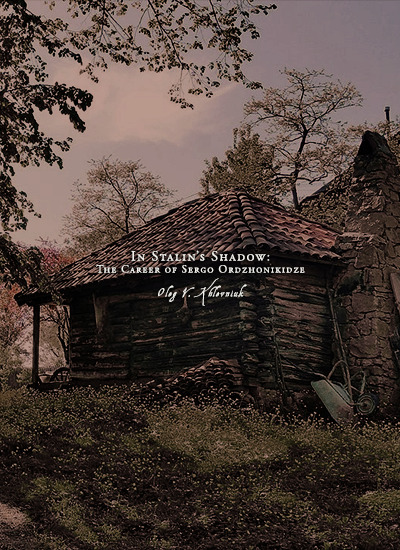
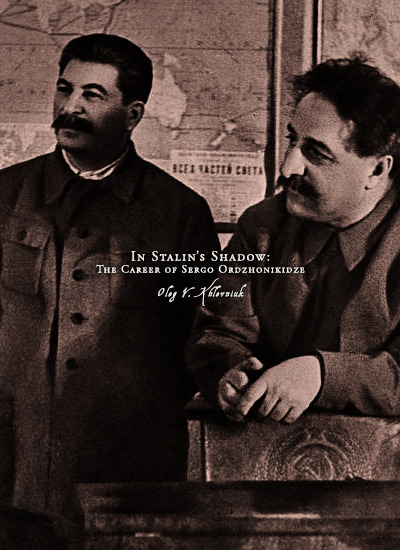
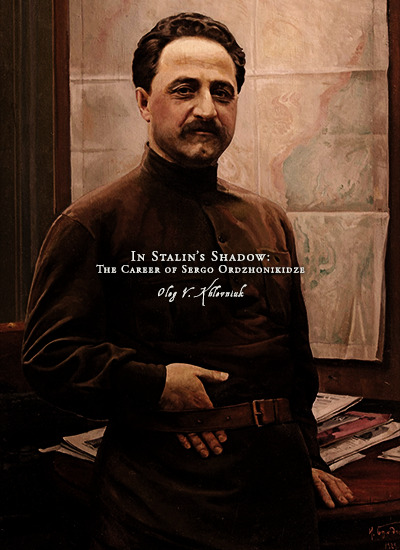
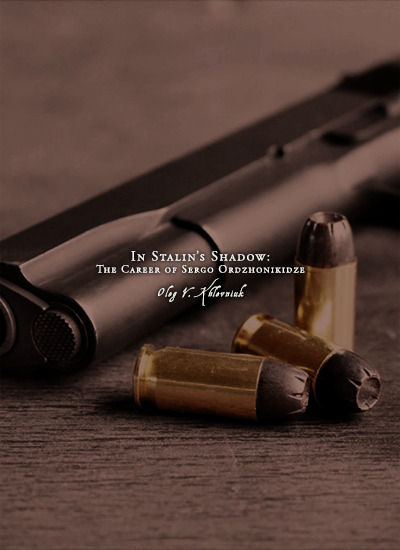
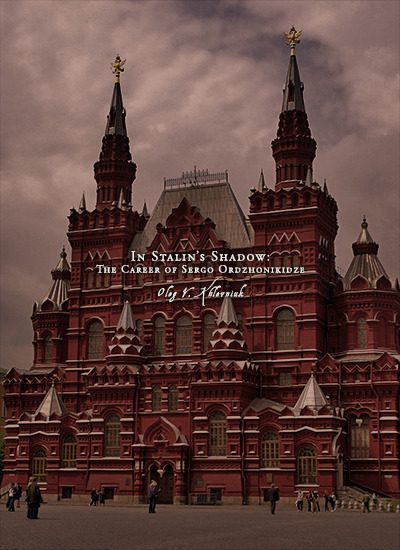
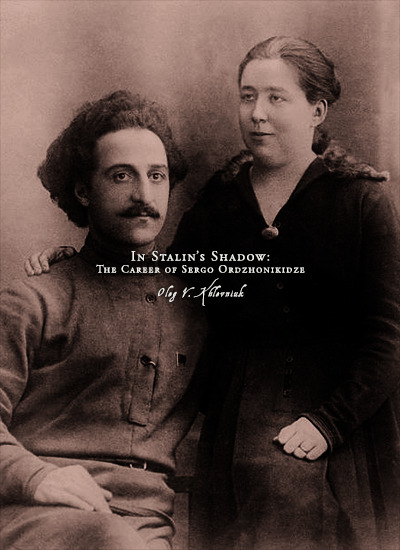
Favorite History Books || In Stalin’s Shadow: Career of Sergo Ordzhonikidze by Oleg V. Khlevniuk ★★★★☆
The facts presented in this book allow us to argue with confidence that serious conflicts existed between Stalin and Ordzhonikidze. Stalin had prepared the so-called Great Terror with singleminded determination. Although Ordzhonikidze never spoke out against the purges as such and took a hand in organizing many acts of state terror, he considered some of the repressions excessive and actively tried to defend his friends and comrades. Overall, Ordzhonikidze’s position can be called one of “soft Stalinism,” oriented toward the Stalinist general line, but rejecting extremes of terror, mainly in relation to “his own people.”
Was such a political line viable? Many think not. Stalinists, after all, are those who believed that the policy of mass purges was the only option, owing to the growing threat of war and the existence of a potential “fifth column.” Some anti-Stalinists view the mass repressions as an essential element of the system, as its very trademark, and believe that the only way to avoid them would have been to destroy the system itself. But another line of reasoning also exists: real Stalinism was “excessively” terroristic, and gave rise to extremes, superfluous even from the point of view of its own laws and strategies. An “underlying network of fear” fortified by terror was a fundamental and necessary feature of Stalinism. They went so far, however, that they often weakened despotic power. It follows from this that differences of opinion even within the framework of the strategy worked out by the Stalinist leadership at the end of the 1920s included less terroristic alternatives and more realistic policies. In some ways, what took place immediately after Stalin’s death supports this point of view: His successors, without encroaching upon the foundations of the system, quickly repudiated many of the extremes of state terror.
But this does not mean that the nation’s development in the 1930s could have unfolded differently. The spectrum of possible options was limited by the existence of a rigid political regime, by the need to implement an industrialization long overdue, and by the social and cultural realities of a relatively backward country. Nevertheless, the so-called command-administrative policy clearly is not the same as Stalinism. Even in the 1930s, preconditions existed in society for the successful implementation of a more moderate, less arbitrary, and less terroristic command-administrative system. It is sufficient to note that the greatest successes of the 1930s were registered during periods of a relatively moderate and balanced economic policy and somewhat restrained repression. ...
Stalin’s attempts to upset the complex political balance that had taken shape and his designs to take away the remaining independence from his old colleagues aroused Ordzhonikidze’s resistance. Unlike other Politburo members (who also merit special investigation), he took action. Ordzhonikidze’s personal qualities and the fact that he could rely on the support of a sufficiently cohesive economic nomenklatura in operation for some time also played their role. To a certain extent, Ordzhonikidze expressed the interests of party members who had good reason to fear a new round of terror. In the provinces, economic and party leaders often presented a united front.
At the same time, it is unlikely that Ordzhonikidze was ready to get involved in a serious struggle with Stalin. He was too much a Stalinist and too dependent as a political figure. Compared to the poorly educated Ordzhonikidze (and also Kaganovich, Voroshilov, and others), Stalin appeared as a great theoretician and a prominent politician. Ordzhonikidze himself must have understood this. It is not surprising, therefore, that the available facts suggest that Ordzhonikidze only tried to make Stalin change his mind, although he did so insistently, and, it can be said, fearlessly.
After his death, Stalin’s comrades-in-arms, many of whom, like Ordzhonikidze, were “soft Stalinists,” partially dismantled the system and rejected the extremes of state terrorism. They opted for a variant that had germinated back in the 1930s and was in some measure connected with Ordzhonikidze.
#historyedit#litedit#sergo ordzhonikidze#soviet history#georgian history#russian history#european history#asian history#history#history books#nanshe's graphics#like most soviet history books this one's pretty depressing
15 notes
·
View notes